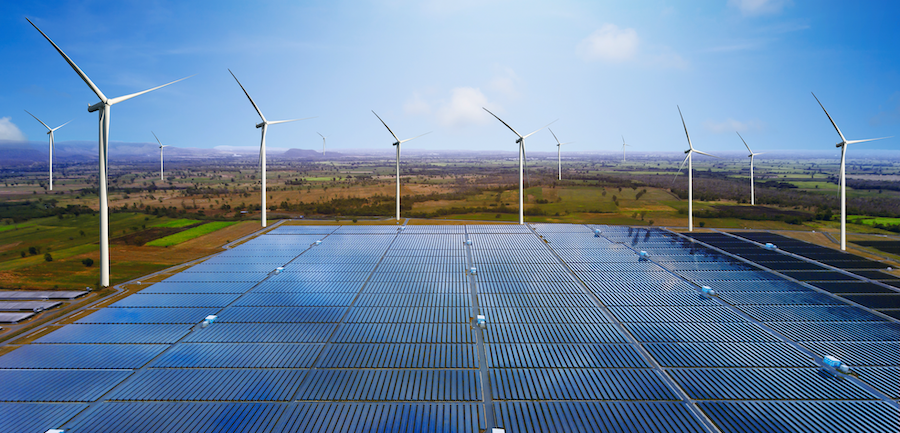
After initial reluctance, energy providers are beginning to harness the potential of Virtual Power Plants.
The energy industry has been talking about Virtual Power Plants (VPPs) for several years. However, implementation of the ideas around VPPs has been slow. It’s only now that there are some large-scale real-world examples, providing a raft of benefits to suppliers, customers and our planet.
In this article, we’ll look at what Virtual Power Plants are and how they work. We’ll outline their benefits and disadvantages. Finally, we’ll look at some examples.
What are VPPs?
Virtual power plants aggregate a network of medium and small-scale power-generating assets into one central, digital control room through connected technology.
The generating units could be wind farms, solar parks, combined units, geothermal or other ways of generating and storing power. In addition, homeowners that run large storage batteries could link their batteries to a VPP.
VPP technology controls the storage and distribution of the power each asset generates. The software balances supply and demand, coping with peaks and improving efficiency.
VPPs are not to be confused with ‘microgrids’. Microgrids aggregate power in a similar way, but they are designed to be used separately from the existing grid, such as if the power goes down. They are also used in areas where the national grid doesn’t reach.
How do VPPs work?
All assets within a Virtual Power Plant are fitted with a remote control system to connect them to central control, where they are monitored and controlled. In addition, encrypted data protocols allow VPPs to collect and analyse real-time power generation and consumption data.
Software algorithms operate each generating asset, balancing supply and demand to the grid. For example, if there is a peak in consumption and an area is running low on power, the algorithm will tell the VPP to access energy from other sources.
Benefits for energy companies
VPPs help energy companies lower the cost of producing power and supplying it to customers. When producing power, firms can aggregate power from across the various sources, monitor production data in real-time, and allocate resources to the cheapest sources.
When supplying power to consumers, VPPs help balance their loads. VPPs reduce the risk of surges and power cuts which cost money to fix and damage their brand in the eyes of their customers.
VPPs are a more cost-effective way for companies to maintain their distribution grid. Compared to the cost of upgrading existing infrastructure, switching to a new VPP is much cheaper.
Finally, VPPs make trading electricity on the open market more efficient. VPPs generate data as well as power, which puts suppliers at an advantage in the market. In addition, they can produce better forecasts for scheduling electricity production and trading.
Advantages for customers
In an ideal world, consumers will benefit from VPPs through lower bills as suppliers can pass on the efficiency savings they make on to the customer.
Also, by participating in the generation and distribution of electricity, they should be able to save money on their tariffs. Examples of this could be installing solar panels and storage batteries in their houses, connecting to the VPP network. There are examples in America of customers taking part in VPP pilot schemes receiving a rebate every month on their bills.
Environmental benefits
Virtual Power Plants bring several significant environmental benefits. VPPs make use of power from renewable sources like solar and wind power. While traditional fossil fuel power plants can also be part of VPPs, the vast majority of VPP assets will be renewables.
VPPs also promote energy creation and sharing, driving resources where they are most needed and reducing waste.
Finally, through the nature of VPPs and the drive for efficiency, customers consume power closer to the place where it is generated. This cuts down on transport which is bad for the environment. It also reduces energy loss during transport.
Disadvantages of VPPs
There are few challenges to the take-up of VPPs, although they are not insurmountable.
At the moment, there is no industry standard protocol for all generating and storing assets to use when communicating. This makes implementation a challenge. It’s one reason utility companies are reluctant to invest in VPPs – with so many different protocols out there, they do not want to choose an option that could become obsolete.
There are also concerns around security inside VPPs. Many consumers will not want personal information about energy use being transferred between utility firms. They may also be reluctant to store energy for VPPs as the equipment and technology take up space in the home.
There are also doubts over whether the flexible sharing of power is really that efficient. For example, some experts believe you can’t account for the spikes and troughs of individuals’ power consumption – or the simultaneous technical constraints of the network.
Real-world examples
However, there are several examples of energy companies big and small getting involved in VPP projects and finding success.
There is a large scale virtual power plant in Lucerne, Switzerland, operated by CKW that brings together 110 power generating assets, including rivers, waste plants, wind and solar. In the future, the VPP could scale up to 1000 assets. CKW has found the VPP helps them save time and money as they optimise their power generation and distribution. It makes the decision-making process faster and more accurate.
Here in the UK, Centrica has constructed a VPP in Cornwall that allows residential homes to generate power which can be redistributed across the grid. It boosts flexibility and better load allocation.
A golden opportunity
Despite a few minor disadvantages, virtual power plants provide a golden opportunity to make power generation and distribution more cost-effective, flexible and environmentally friendly. If companies can find significant cost savings, expect VPPs to reach critical mass in the next few years.
